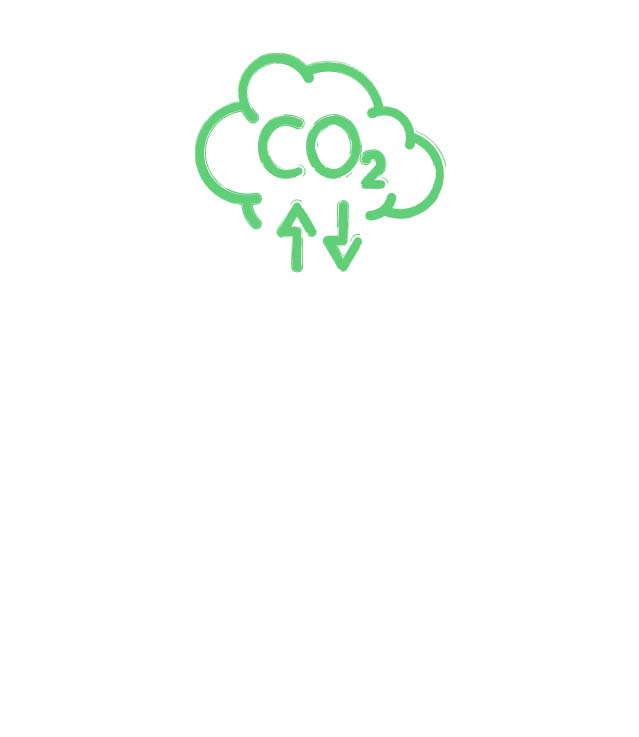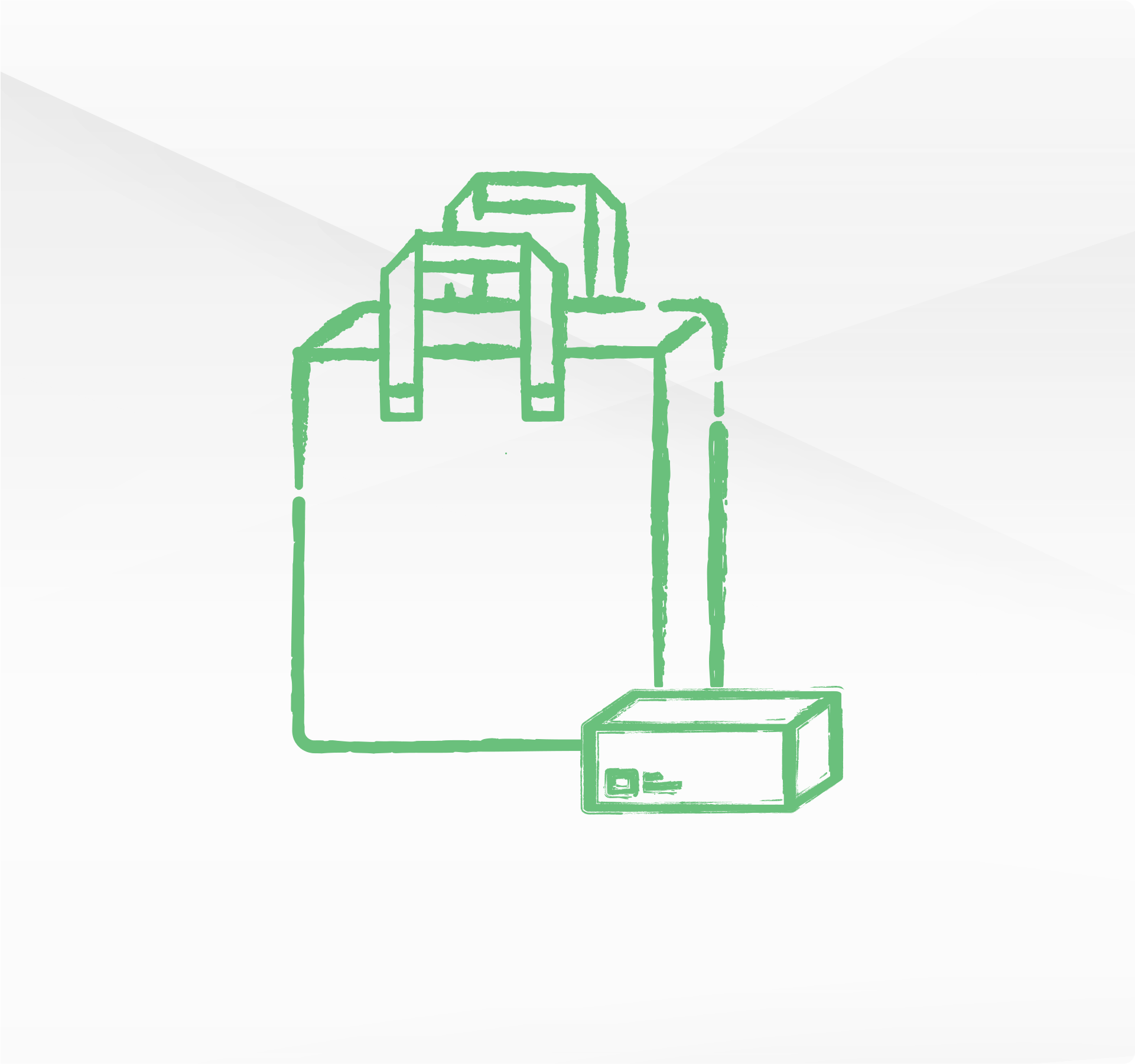
Tech
that protects
our planet
Trust us, we're down to earth.
Eco-friendly
across the board
From product design to packaging, no detail goes unnoticed.
-
![HUAWEI Eco-Friendly Materials]() Eco-friendly materialsSafe materialsState-of-the-art testing capabilitiesRenewable materialsEco-friendly plasticsHuawei has established a hazardous substance management system in accordance with QC 080000 and passed third-party certification to ensure that its products, throughout their lifecycles, are healthy and safe for both their users and the environment. The QC 080000 certification recognizes that Huawei's quality management system is more systematic and standardized in terms of the end-to-end control of hazardous substances in products.Our 500-square-meter environmental protection lab is chock full of cutting-edge equipment, encompassing chromatography, spectrum, and mass spectrometry, and has been certified by the China National Accreditation Service for Conformity Assessment (CNAS).One important measure that we have taken to protect the environment and promote the circular economy is by using premium renewable materials, which reduce our reliance on direct mineral sources. Huawei Device currently uses 14 different types of renewable materials, including paper, plastic, gold, copper, aluminum, cobalt, and tin, in its products. It is also working with its suppliers to explore how to better implement more quality, renewable materials.Since 2013, we have used recycled and bio-based plastics widely in Huawei smartphones, smart watches, AR/VR devices, Bluetooth earphones, mobile routers, and other products, substantially mitigating the negative environmental impact associated with the manufacturing of petroleum-based plastics. Over 30% of the bio-based plastics that we use come from castor oil, which reduces carbon dioxide emissions by 62.6%, when compared with conventional plastics.
Eco-friendly materialsSafe materialsState-of-the-art testing capabilitiesRenewable materialsEco-friendly plasticsHuawei has established a hazardous substance management system in accordance with QC 080000 and passed third-party certification to ensure that its products, throughout their lifecycles, are healthy and safe for both their users and the environment. The QC 080000 certification recognizes that Huawei's quality management system is more systematic and standardized in terms of the end-to-end control of hazardous substances in products.Our 500-square-meter environmental protection lab is chock full of cutting-edge equipment, encompassing chromatography, spectrum, and mass spectrometry, and has been certified by the China National Accreditation Service for Conformity Assessment (CNAS).One important measure that we have taken to protect the environment and promote the circular economy is by using premium renewable materials, which reduce our reliance on direct mineral sources. Huawei Device currently uses 14 different types of renewable materials, including paper, plastic, gold, copper, aluminum, cobalt, and tin, in its products. It is also working with its suppliers to explore how to better implement more quality, renewable materials.Since 2013, we have used recycled and bio-based plastics widely in Huawei smartphones, smart watches, AR/VR devices, Bluetooth earphones, mobile routers, and other products, substantially mitigating the negative environmental impact associated with the manufacturing of petroleum-based plastics. Over 30% of the bio-based plastics that we use come from castor oil, which reduces carbon dioxide emissions by 62.6%, when compared with conventional plastics. -
![HUAWEI Green Packaging]() Green packagingLess wrapping plasticsLighter packagingStreamlined manualsEco-friendly packagingHuawei constantly improves the packaging design for its products and reduces and gradually eliminates disposable plastics from its packaging materials. The Mate series smartphones, for example, use special paper to replace the plastic film that protects the smartphones. It has also developed a kind of high-strength paper to replace plastic sealing labels for boxes. These changes are expected to reduce the use of disposable plastics by approximately 13 metric tons for every 10 million phones.We strive to cut down product packaging, especially by reducing and even eliminating disposable plastics, in favor of reusable and eco-friendly materials, without compromising product protection. In 2023 and 2024, we developed stack tools for small packaging, enabling automatic stack design and simplifying product packaging at one time. In addition, the requirements for package space utilization, as well as restricted use of disposable plastics, are specified in the Sustainable Device Packaging Specifications, which are integrated into Huawei product packaging.We are constantly redesigning our manuals to save paper and reduce wood consumption. In 2024, we continued to trim down our user manuals for new product categories, such as HUAWEI Vision and smart home products. Currently, this initiative has extended to a full range of devices, including smartphones, tablets, PCs, wearables, routers, CPE, audio devices, HUAWEI Vision, and smart home products, reducing the number of user manual pages by 88%.We use recycled paper and paper materials from Forest Stewardship Council (FSC) certified forests, which uphold rigorous sustainable development standards. Our latest eco-friendly materials have been certified as compostable by DIN CERTCO, meaning that they are biodegradable as part of industrial composting. Huawei uses 100% degradable environmental-friendly soy ink in place of petroleum inks, which spruces up the printing, while also ensuring that the packaging is safer and more eco-friendly.
Green packagingLess wrapping plasticsLighter packagingStreamlined manualsEco-friendly packagingHuawei constantly improves the packaging design for its products and reduces and gradually eliminates disposable plastics from its packaging materials. The Mate series smartphones, for example, use special paper to replace the plastic film that protects the smartphones. It has also developed a kind of high-strength paper to replace plastic sealing labels for boxes. These changes are expected to reduce the use of disposable plastics by approximately 13 metric tons for every 10 million phones.We strive to cut down product packaging, especially by reducing and even eliminating disposable plastics, in favor of reusable and eco-friendly materials, without compromising product protection. In 2023 and 2024, we developed stack tools for small packaging, enabling automatic stack design and simplifying product packaging at one time. In addition, the requirements for package space utilization, as well as restricted use of disposable plastics, are specified in the Sustainable Device Packaging Specifications, which are integrated into Huawei product packaging.We are constantly redesigning our manuals to save paper and reduce wood consumption. In 2024, we continued to trim down our user manuals for new product categories, such as HUAWEI Vision and smart home products. Currently, this initiative has extended to a full range of devices, including smartphones, tablets, PCs, wearables, routers, CPE, audio devices, HUAWEI Vision, and smart home products, reducing the number of user manual pages by 88%.We use recycled paper and paper materials from Forest Stewardship Council (FSC) certified forests, which uphold rigorous sustainable development standards. Our latest eco-friendly materials have been certified as compostable by DIN CERTCO, meaning that they are biodegradable as part of industrial composting. Huawei uses 100% degradable environmental-friendly soy ink in place of petroleum inks, which spruces up the printing, while also ensuring that the packaging is safer and more eco-friendly. -
![HUAWEI Durable Products]() Durable productsBuilt for the long haulEasy to updateEasy to maintainWe believe that one of the most effective ways to help protect natural resources is by manufacturing durable and quality products that stand the test of time. We conduct strict durability tests on our products before delivery, and extend their lifetime with regular system updates and accessible and affordable repair services. These efforts make consumers full partners in the circular economy.We strive to provide an ultra-smooth system experience backed by convenient system updates, as it is important for enhancing product durability and user experience. HarmonyOS, with the HUAWEI Ark Engine, delivers significant improvements in graphics, multimedia, memory, and other performance, providing an impressively smooth user experience. Huawei announced at its May 2024 all-scenario product launch that 180 device types are eligible for HarmonyOS 4.2, offering a smooth and convenient user experience.Huawei has built a global network for accessible repair services, providing users with more reliable and affordable repair plans, supplemented by high-level repair centers, which offer more specialized repairs. Access to reliable and affordable repair services extends the lifespan of each product and slashes potential waste, ensuring that device replacement is no longer the only option for users facing a product breakdown.
Durable productsBuilt for the long haulEasy to updateEasy to maintainWe believe that one of the most effective ways to help protect natural resources is by manufacturing durable and quality products that stand the test of time. We conduct strict durability tests on our products before delivery, and extend their lifetime with regular system updates and accessible and affordable repair services. These efforts make consumers full partners in the circular economy.We strive to provide an ultra-smooth system experience backed by convenient system updates, as it is important for enhancing product durability and user experience. HarmonyOS, with the HUAWEI Ark Engine, delivers significant improvements in graphics, multimedia, memory, and other performance, providing an impressively smooth user experience. Huawei announced at its May 2024 all-scenario product launch that 180 device types are eligible for HarmonyOS 4.2, offering a smooth and convenient user experience.Huawei has built a global network for accessible repair services, providing users with more reliable and affordable repair plans, supplemented by high-level repair centers, which offer more specialized repairs. Access to reliable and affordable repair services extends the lifespan of each product and slashes potential waste, ensuring that device replacement is no longer the only option for users facing a product breakdown.
Since 2020, Huawei's repair services for mainboards, screens, and other parts have extended the life of over 10 million devices.
Eco-friendly
production for lighter environmental footprints
Sparing no effort to spare the planet




Recycle and reuse
and reuse to make the most of resources
Protecting the planet, one durable product at a time


Reducing our carbon footprint
To reduce carbon emissions, countries and enterprises have shifted their attention to clean and renewable energy. At Huawei, more clean, including renewable, energy is used throughout its operations. Two examples of this are how we have already built PV plants on our campuses, and use clean energy to slash carbon emissions during our operations.
The electricity from renewable energy sources in 2023 reached more than 720 million kWh.
The electricity from clean energy sources in China is approximately 2.87 billion kWh, accounting for more than 51% of the total electricity consumption (about 5.6 billion kWh).
Less carbon across the supply chain
Huawei values sustainability in its global supply chain, and works with partners to facilitate the supply chain transformation to green and low-carbon development and mitigate the threat to sustainable development. It joins industry chain partners' efforts to reduce carbon emissions by collecting statistics on carbon emissions and reporting them, setting scientific carbon emission reduction goals, working towards such goals, etc.
Green warehousing
To reduce excessive packaging during shipment, streamline transportation, and slash carbon emissions, Huawei has implemented several e-commerce logistics optimizations: eliminating paper shopping lists, phasing out outer waterproof packing bags for express service, cutting down on carton and tape use, promoting zero-plastic packaging, improving package space utilization, and more. These measures reduce more than 2,700 metric tons of carbon emissions during the transportation of Huawei-operated commodities every year.
Green logistics
Huawei optimizes transportation solutions to reduce the carbon footprint caused during transportation. Since 2023, it has taken the following measures to improve the sustainability of transportation processes and reduce carbon emissions by over 450 metric tons annually: using new energy vehicles and clean energy freighters, reducing paper documents, simplifying packaging, promoting recyclable turnover boxes, etc.
My Poplar Forest



